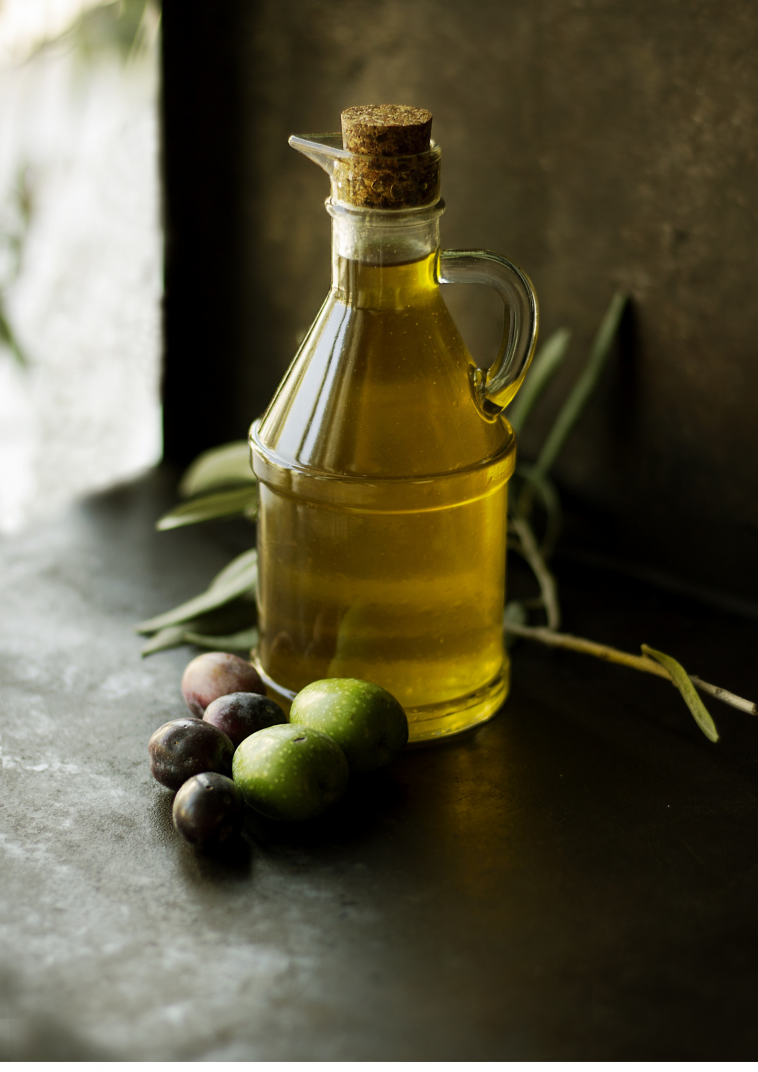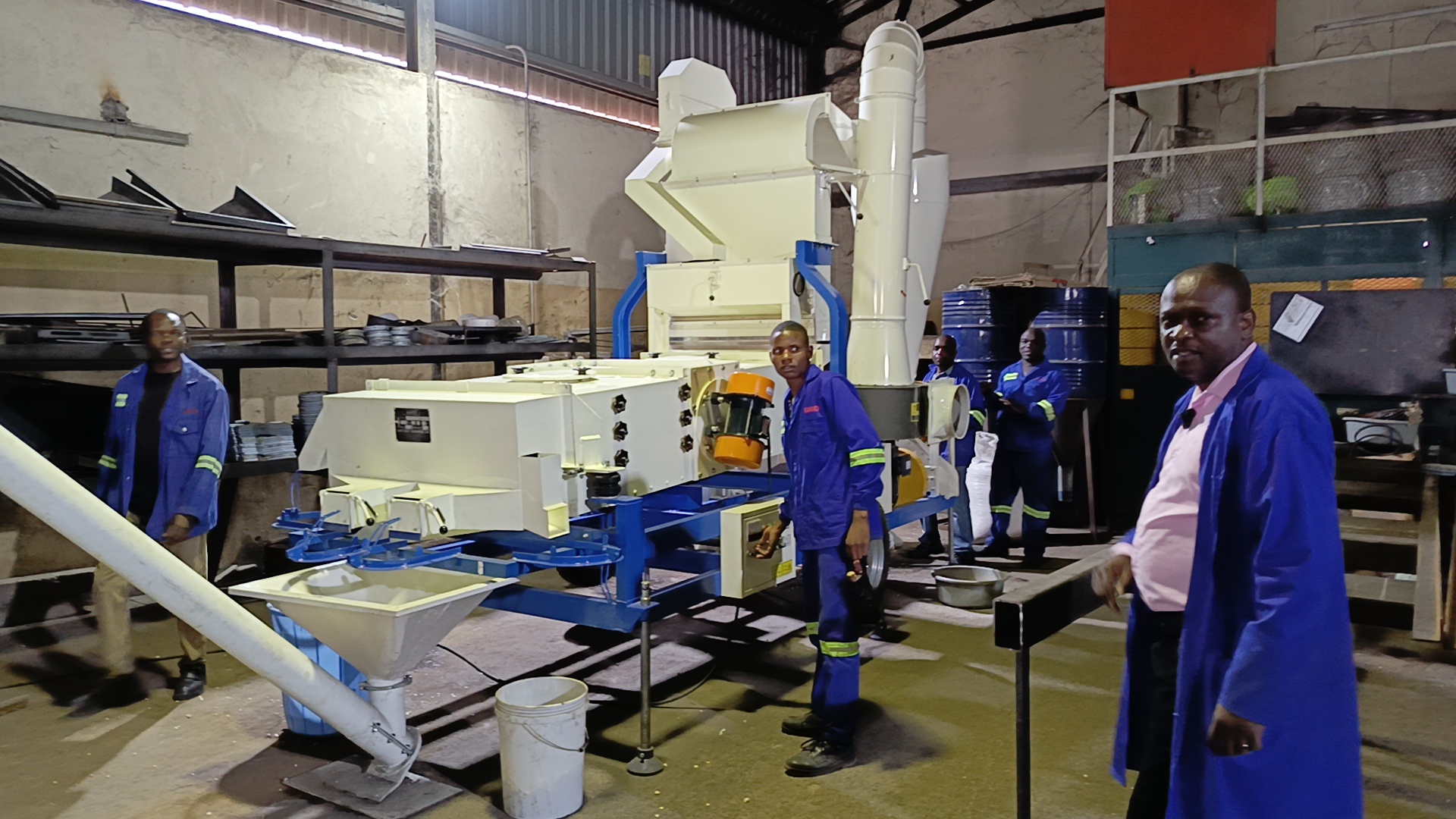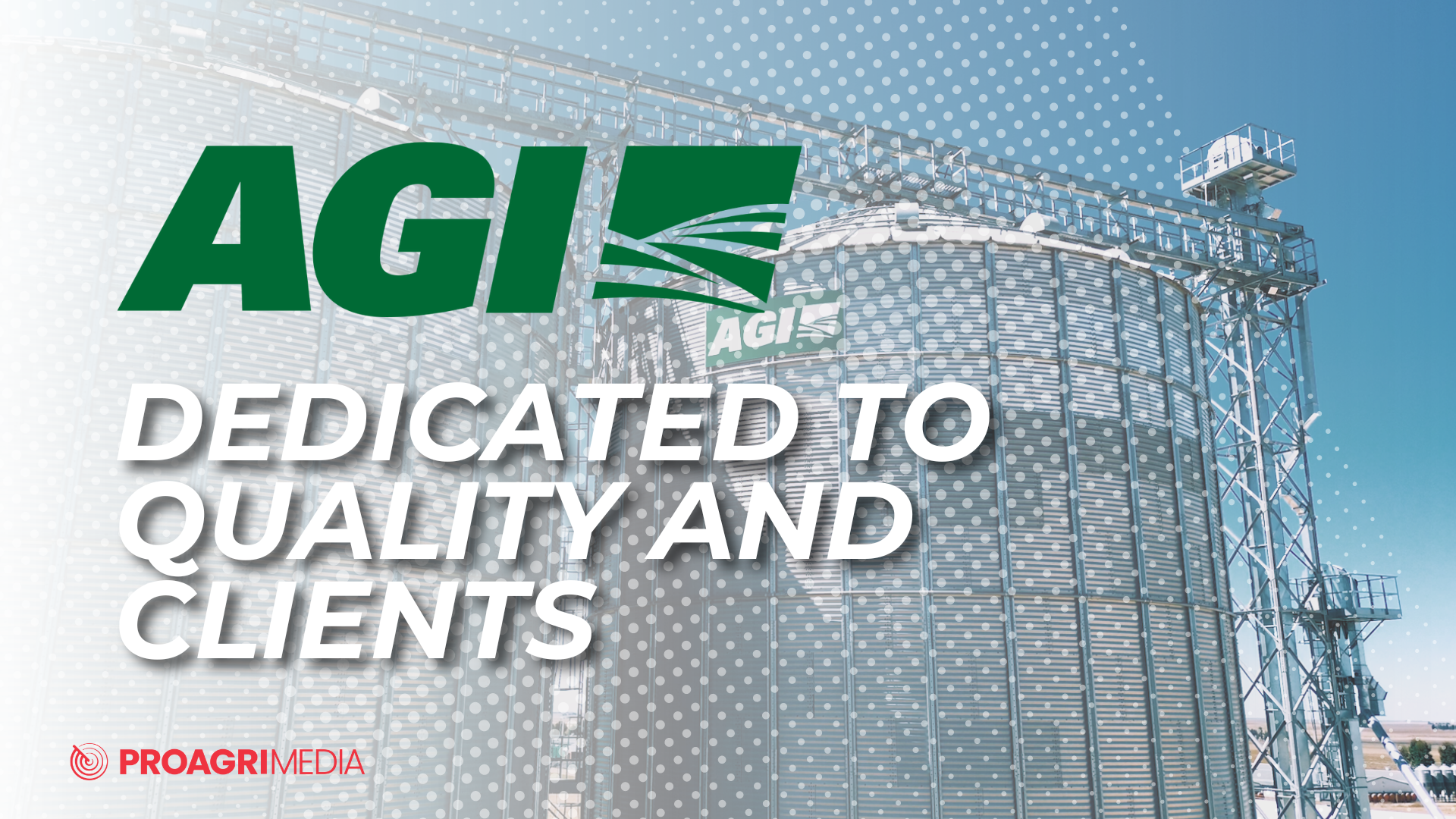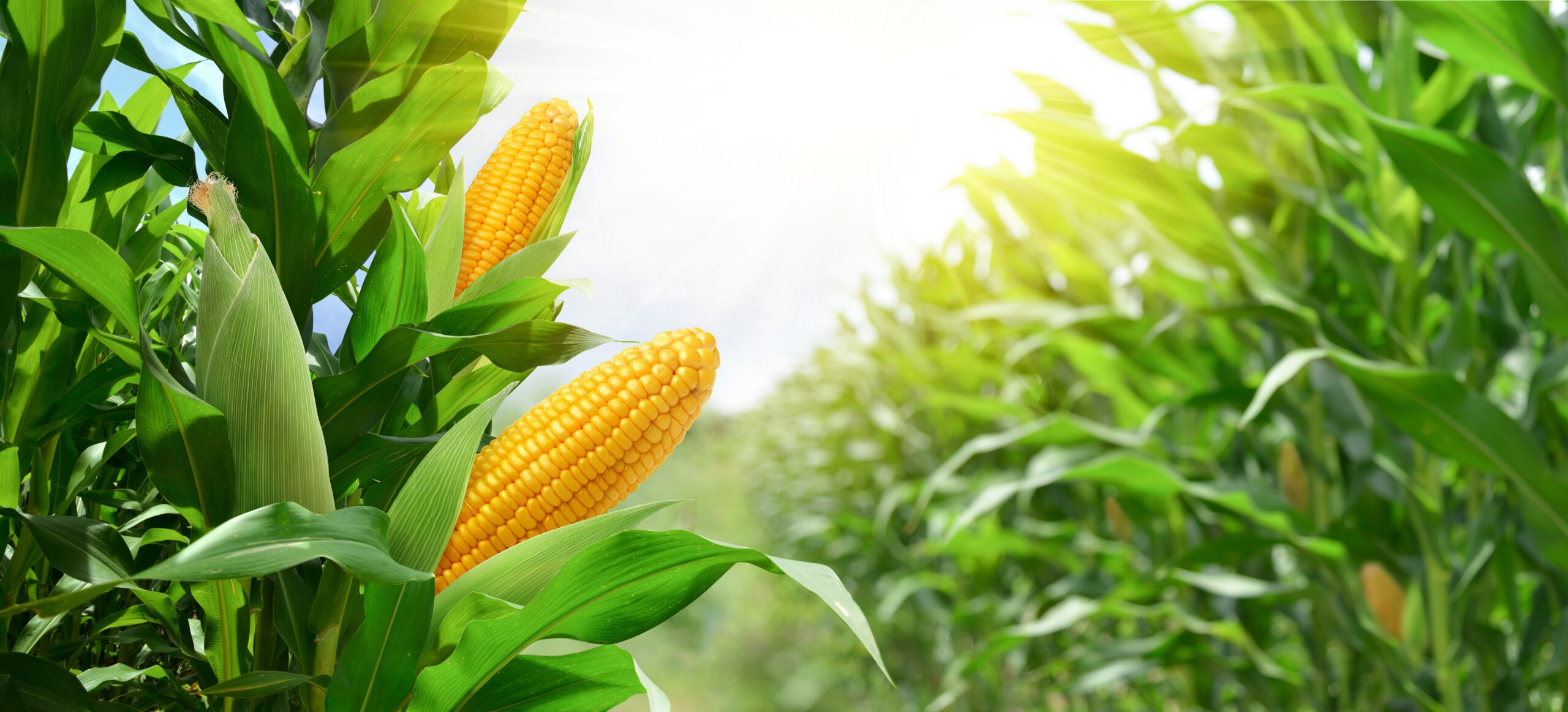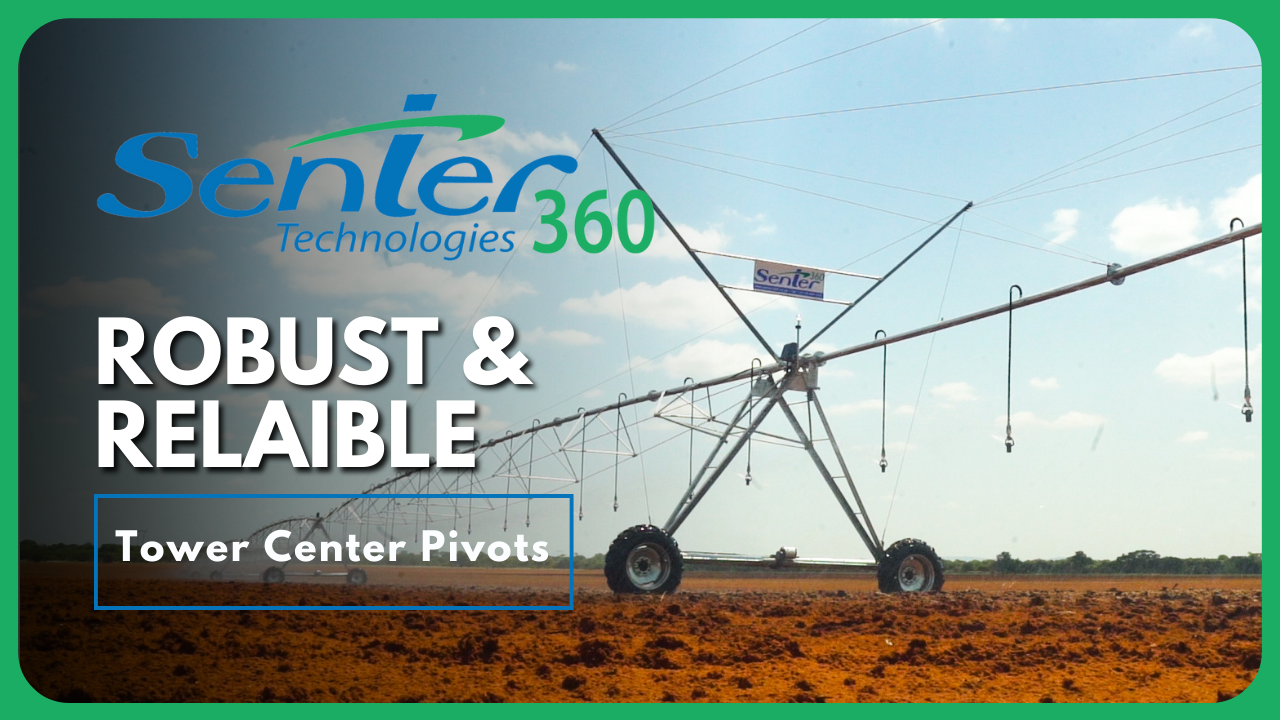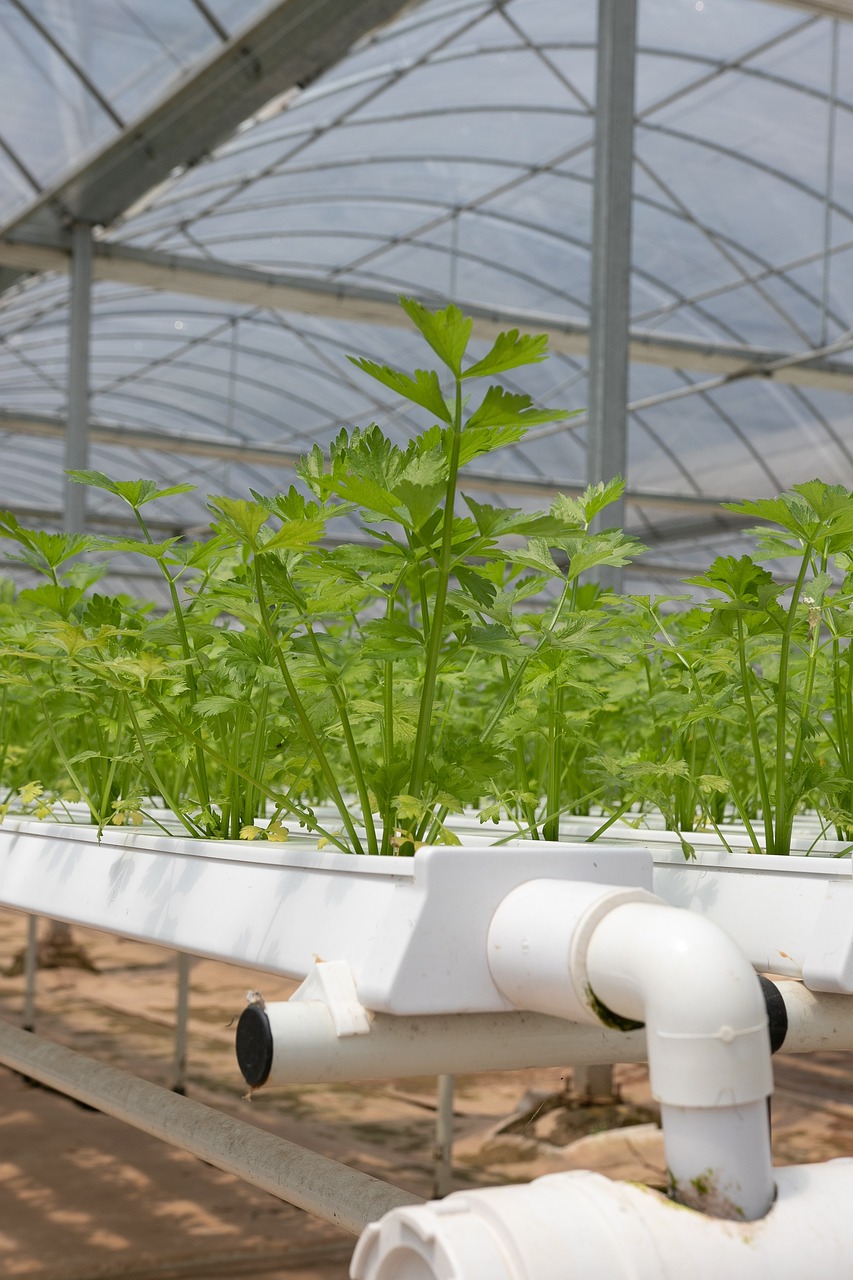Virgin olive oil is the oil extracted by mechanically pressing the fruit without using any heat, and may have a slight off-flavour, “olive-fruity” and may contain acid up to 0,3 to 0,6%. Extra virgin olive oil is oil where the oleic acid content does not exceed 1%. Fine virgin olive oil is oil where the oleic acid content does not exceed 1,5% and the flavour is perfect. Semi-fine or ordinary virgin oil is oil where the maximum acidity is 3,3%. If the acidity of the oil is above 3,3%, the oil is not fit for human consumption and is used as lampante olive oil for purposes such as packing sardines or smoked oysters.
Product description – olive oil
Olive oil is the oil extracted from the fruit pulp of ripe olives. Olives yield between 10 and 16% oil, which is extracted without the use of heat, that is cold pressing. Cold pressed olive oil is thus produced by keeping the temperature of the crushed olive pulp below 28 °C.
The quality of the oil is determined by the oil’s acidity (oleic acid) and flavour. The free fatty acid content of the oil is an indication of the degree to which oil has undergone degradation.
High acidity is an indication that the oil has undergone degradation and is of low quality. The high acidity levels can be reduced by refining or neutralising the oil during refining.
The colour may vary from a light yellow to greenish, and is not necessarily an indication of the oil quality. International standards are laid down by the International Olive Council.
Various grades of olive oil are available, namely:
- Virgin olive oil is the oil extracted by mechanically pressing the fruit without using any heat, and may have a slightly off-flavour, “olive-fruity” and may contain acid up to 0,3 to 0,6%.
- Extra virgin olive oil is oil where the oleic acid content does not exceed 1%.
- Fine virgin olive oil is oil where the oleic acid content does not exceed 1,5% and the flavour is perfect.
- Semi-fine or ordinary olive oil is oil with a maximum acidity of 3,3%. If the acidity of the oil is above 3,3%, the oil is not fit for human consumption.
- Refined olive oil: Pure refined olive oil is refined from virgin oil and second grade refined olive oil is refined from solvent-extracted oil.
- Blended olive oil: Pure blended olive oil is prepared from a blend of virgin and refined olive oil while blended olive oil is prepared from a blend of virgin and second quality refined oil.
- Olive pit oil can also be extracted and is sometimes added to virgin olive oil.
Harvesting
Harvesting is the manual or mechanical removal of a food product from its natural source or parent plant. Olives are harvested when they are approximately 75% black. Green olives do not contain enough oil, and when they are fully ripe (black) the oil quality is poor and spoils easily.
The yield may vary considerably from year to year according to the climate conditions.
Olives are harvested manually where manual labour is available. Mechanical harvest can be used for olives destined for olive oil production. The tree is shaken to remove the fruit from the tree. The fallen fruit is then collected in nets.
Commercially important olive cultivars include Manzanillo, Mission, Sevillano, Calamata, Ascelano, and Barouni.
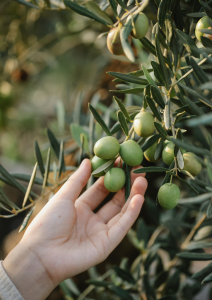
Cleaning
Cleaning is the removal of soil, plant rests and other unwanted debris from food products through dry or wet methods. Olives are cleaned in various ways. A dry cleaning method which uses aspiration removes particles lighter than the olives by blowing air currents over or through a bed of olives. Vibrating screens can be used to separate leaves, twigs and other materials smaller than the olives. Olives are most frequently cleaned by washing using pressurised potable water. Counter-current washing machines or showers placed over conveyor belts are very effective.
A static washing system can also be used where the olives are placed in water in fermentation tanks. The water is changed several times over a period of 2 to 3 days before brining. This static system can serve as a short storage of olives to regulate processing loads. Not only does it clean the fruit, but partial debittering can also take place.
Storage (optional)
The product is kept under controlled conditions until further use. The oil should be extracted from the fruit as soon as possible after harvest to prevent damage caused by enzymes naturally present in the fruit as well as heat developing as a result of the respiration of the fruit. Should it be necessary to store the fruit prior to further processing, it must be done in cool buildings, preferable under water in tanks, which may contain 3% salt and/or 0,03% citric acid. A storage period of less than four days is preferred.
Sorting and inspection of the oil olives
This is done to select the best suitable raw materials for manufacturing the value-added end-product. The cleaned olives are spread on sorting tables or moving belts and inspected to ensure that only clean sound olives are processed. Any green or overripe, damaged, or spoilt olives are also removed. Sorting and inspection are very labour intensive, but necessary to ensure a good quality product.
Crushing of olives for oil
The olives are crushed for easy extraction of the oil from the pulp. Stone mills or hammer mills can be used.
Stone mills: These mills consist of a stone base and an upright millstone enclosed in a metal basin. The olives are fed into the mill and are pulped / crushed by the stone wheels. Paddles and blades circulate and expel the paste from the mill. Oil extraction is not the main objective at this stage, although some oil may be expelled, it is not collected. Scrapers are used to clean the millstones between crushing various lots of olives.
Disadvantages of stone mills: Bulky machinery, slow extraction speed, high cost, batch process and labour-intensive manufacturing process.
Advantages: No contamination with metals or overheating of the paste, resulting in a better quality product. Stone milling is sometimes used for specialized products with an added price advantage / increase over olive oil produced with other processes.
Hammer mill: The crusher consists of stainless steel fixed or moving hammers mounted on a central disc, rotating at high speed around a shaft against a metal grating. The speed and size of the screen / grating can be adjusted to ensure maximum extraction during later processes. There may be a temperature increase during the milling process which may cause enzymatic changes in the oil. The temperature can be controlled by using cool olives, adjusting the speed of the hammer mill, and altering the screen size. It is possible to obtain a good quality oil by using hammer mills.
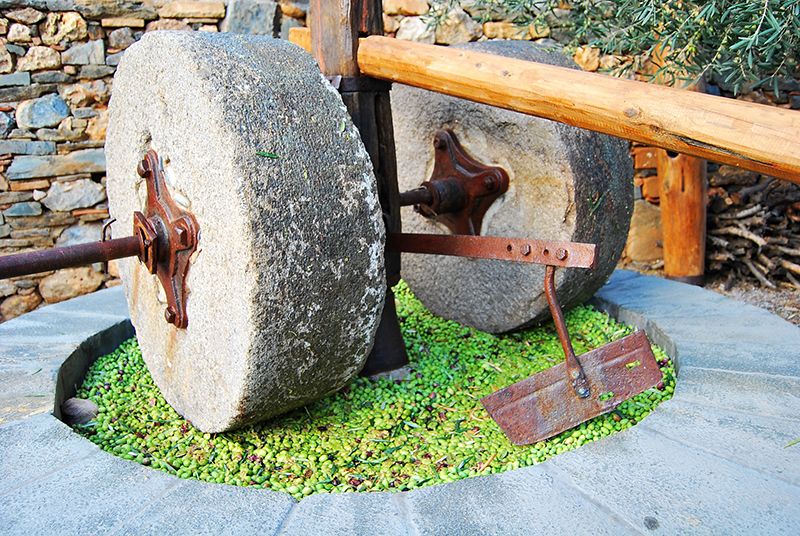
Beating of crushed olives
Beating is a way to agitate a fluid food product with the aim of producing a more homogeneous mixture along with the inclusion of air into the product. This prepares the crushed olive pulp (paste) for oil separation. Beating ensures optimal oil extraction through the formation of large oil droplets and the breaking up of the natural oil-water emulsion in the product. The speed, time and temperature must be carefully controlled to ensure maximum extraction.
Beating is used especially for pastes from the hammer mills. This increases the oil extraction rate from 40 to 45%, to 80 to 85%. Small oil droplets are lost in the by-products. Hammer milled olives are beaten for approximately 60 minutes in a two or three stage process. The temperature and time must be carefully controlled to ensure minimal damage to the oil.
The paste scraped from the stone mills require less beating. The emulsion of stone milled olives is broken after 10 to 15 minutes of beating at room temperature.
The beater resembles a butter churn. Batch type churns are used with a capacity from a few litres to 45 000 litres. These churns were originally made of wood, but have since been replaced by stainless steel.
Wood churns: the churns must be prepared to prevent the product from sticking to the surface by scalding the surfaces with boiling water and immediately cooled with chilled water. A thin layer of water present on the wood surface prevents the paste from adhering to the sides of the churn.
Stainless steel churns must be cleaned with detergents containing silicates to maintain a “non-stick” surface. The batch churns are barrel or cone shaped with a fixed or rotating internal “paddle”. The fat globules stick together, the fat-in-water emulsion changes to a water-in-fat emulsion.
Extraction of olive oil
Extraction is the separation of various fractions or specific components from food products that are required for further processing. The olive oil “must” is extracted from the beaten paste. The must is a combination of edible oil and oil bound to water (vegetable water). The oil can be extracted from the paste by pressing, centrifugation and percolation, or a combination thereof. The choice of the final extraction process depends on the crushing method used.
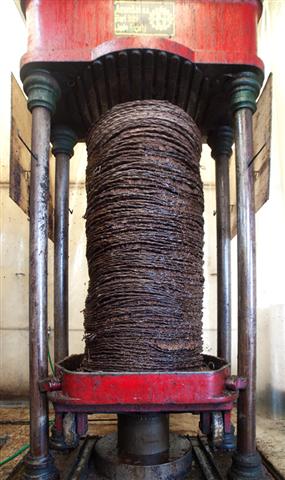
Pressing:
Pressing is the application of force or squeezing of fruit to extract its juice. Vertical batch presses are mostly used. The pulp is spread on natural fibre mats separated by wooden or metal racks which have channels (grooves) on both sides and a central spike which allows the oil to move from the press. Pressure is applied to the stacked mats. The batch may be pressed up to two times for optimal oil yield. Equipment is simple and has low energy requirements, but requires more manual labour than the other processes.
Centrifugation:
Centrifugation is a semi-continuous process by which liquid samples are spun around at high speed to cause the accelerated settling of particles in suspension. A high-speed centrifuge with a fine perforated screen is used to separate the oil from the paste. Water is added to the paste to ensure that the paste is diluted (thinned) to obtain / render the maximum quantity of oil. The oil yield is slightly lower than that of pressing.
This method of extraction is quite often used for hammer-milled olives, and the longer beating time together with the hot water needed to dilute the paste may result in a poorer quality olive oil than pressing. The equipment is expensive and requires a high energy input.
Percolation:
Percolation is the gradual filtering, straining, or oozing of a liquid through a porous medium. This method of extraction is used in combination with either centrifugation or pressing and is seldom used alone. It is an inefficient extraction method on its own, because the pomace still contains large quantities of oil. When used in combination with either pressing or percolation, the paste is first percolated, then pressed or centrifuged. The equipment is also expensive and has a high energy requirement.
Separation of olive oil and water
Separation involves dividing food into various fractions based on a difference in characteristics. The oil and water are separated in decanting centrifuges which gives an efficient separation of the oil and water. There are various types available:
Conveyor bowl centrifuge
The solid bowl rotates faster than the screw conveyor, which is mounted horizontally, the water moves to the one end and the oil to the other end.
Reciprocating conveyor centrifuge
The product enters a rotating basket (0,3 to 1,2m) through a funnel rotating at the same speed. This gradually accelerates the liquid to the bowl speed while minimizing shearing forces. The oil passes through perforations in the wall, and the water is moved forward by a reciprocating arm, thereby exposing an uncluttered area in the basket for new product to be centrifuged.
A centrifugal clarifier consisting of a stack of conical disks kept apart by strips of metal to form separation channels can also be used. The water-oil mixture is fed into a central inlet tube into the bowl, enters the channels at the outer edge at the bottom of the clarifier, moves through the conical disks, and then through an outlet at the top, separate from the inlet tube. The centrifugal force separates the water from the oil. The water is collected at the bottom and discarded.
Filtration of olive oil (optional)
Filtration is the separation of solid, haze-forming substances or even bacteria from the liquid fraction of food by means of a filter. The oil can also be filtered through cotton pad filters to ensure a clear product without any suspended matter present.
Packaging of olive oil
Packaging is defined as the containment of a food product in a protective barrier that prepares goods for transport, distribution, storage, retailing and end-use. Olive oil should be packaged as soon as possible to avoid oxidation and subsequent degrading of the oil. Dark coloured glass bottles or metal cans are used to pack the most expensive oils to protect them from exposure to light.
Labelling of packaging (optional)
The packaging material or containers that are not pre-printed are labelled and coded with the necessary information. Various labelling and coding systems are available, depending on the type of label and container used.
Published with acknowledgement to the ARC Agricultural Engineering for the use of their manuals. Visit www.arc.agric.za for more information.

